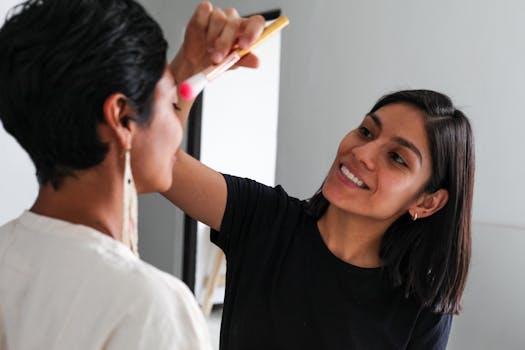
Starting meditation can seem a bit overwhelming, but it’s a journey worth taking. This guide will help you understand the basics, prepare for your practice, and explore different techniques. You’ll also learn how to overcome common challenges and integrate meditation into your daily life. Let’s begin your path to finding inner peace.
Key Takeaways
- Meditation is a practice that helps you focus and relax, leading to a deeper sense of awareness and calm.
- Creating a peaceful space and setting realistic goals can make your meditation practice more effective.
- There are various types of meditation techniques, such as mindfulness, loving-kindness, and body scan meditation.
- Common challenges like a wandering mind or a busy schedule can be overcome with patience and consistency.
- Tracking your progress and staying motivated through journals and community support can enhance your meditation journey.
Understanding the Basics of Meditation

What is Meditation?
Meditation is a practice that helps people develop a deeper sense of awareness and clarity. It often involves focusing the mind, training attention, and promoting relaxation. Meditation allows us to connect with ourselves on a more profound level. When we explore the meaning of meditation, we understand it as a method to cultivate mindfulness and awareness. It is a technique that trains the mind to concentrate and redirect thoughts, often towards the breath, which serves as an anchor.
Historical Roots of Meditation
Meditation has roots in various cultures and religions, dating back thousands of years. It has been practiced in traditions like Buddhism, Hinduism, and even in some elements of Christian contemplation. Over time, these cultural practices have evolved, leading to modern methods that resonate with diverse lifestyles around the globe.
Common Misconceptions
Despite its popularity, many misconceptions about meditation persist. Some people think meditation is a religious practice, but it can be a spiritual or secular activity that anyone can benefit from. Another myth is that there is a “right” way to meditate. In reality, there is no single correct method. Everything from guided sessions to self-led practices can be effective. Many also believe they must meditate for long periods to experience the benefits. However, even short sessions can be surprisingly effective!
Preparing for Your Meditation Practice

Creating a Peaceful Space
To start your meditation journey, it’s essential to create a peaceful space. Find a quiet spot in your home where you can relax without interruptions. Enhance this area with comfortable cushions, soft lighting, or even some calming scents. This will become your personal sanctuary, a place where you can escape the chaos of daily life and focus on your inner peace.
Choosing the Right Time
Timing is crucial for a successful meditation practice. Many people find that meditating in the morning helps set a calm tone for the day. However, the best time is when you can consistently dedicate a few minutes to yourself. Whether it’s early morning or late evening, choose a time that fits your schedule and stick to it.
Setting Realistic Goals
When starting, it’s important to set realistic goals. Begin with short sessions, perhaps just 5-10 minutes, and gradually increase the duration as you become more comfortable. Remember, even brief moments of meditation can be surprisingly effective for stress management and overall well-being. Keep your goals simple and achievable to maintain motivation and enjoy the process.
Different Types of Meditation Techniques
Mindfulness Meditation
Mindfulness meditation is about focusing on the present moment. You observe your thoughts and feelings without judging them. This practice helps you live in the now and notice sensations as they come and go. Mindfulness meditation can be done by simply watching your breath or paying attention to your body.
Practicing mindfulness can be as simple as focusing on your breath while eating or walking. It’s a great way to bring calm into your daily life.
Loving-Kindness Meditation
Loving-Kindness Meditation is all about developing feelings of love and kindness towards yourself and others. This technique helps you foster a sense of compassion and inner peace. By repeating phrases like “May I be happy” or “May you be safe,” you can cultivate a positive mindset.
Body Scan Meditation
Body Scan Meditation involves paying attention to different parts of your body. You start from your toes and move up to your head, noticing any sensations or areas of tension. This practice helps you connect with your body and release stress. It’s a great way to relax and unwind.
Body Scan Meditation can be especially helpful for those who find it hard to relax. It’s a simple yet effective way to tune into your body and let go of stress.
Overcoming Common Challenges

Dealing with a Wandering Mind
It’s natural for your mind to wander during meditation. When this happens, gently bring your focus back to your breath or the present moment without judgment. Remember, it’s normal to think! This practice of returning to your breath can enhance your life by fostering mental clarity and emotional balance.
Finding Time in a Busy Schedule
Finding time for meditation can be challenging, but even a few minutes a day can make a difference. Try to integrate meditation into your daily routine, such as during your morning coffee, while brushing your teeth, or before bed. This small effort can help you cultivate inner peace in a disorderly world.
Staying Consistent
Consistency is key to reaping the benefits of meditation. Set a regular time for your practice, and consider using reminders or setting an alarm to help you stay on track. Support groups can also provide motivation and accountability, making it easier to maintain your routine.
Embracing meditation as a daily practice can unlock self-awareness and emotional control, helping you navigate life’s stresses with a resilient spirit.
Integrating Meditation into Daily Life

Morning Meditation Routines
Starting your day with meditation can set a positive tone. Morning meditation routines help you begin with a clear mind and a calm heart. This practice can enhance your emotional intelligence and improve your overall wellness. Even a few minutes of mindfulness can make a big difference in your mental health.
Meditation at Work
Incorporating meditation into your workday can boost productivity and reduce stress. Find a quiet corner or use a meditation app during breaks. This can help you maintain a work-life balance and improve your time management skills. Remember, even short sessions can be beneficial for your cognitive behavioral therapy and holistic health.
Evening Wind-Down Sessions
Ending your day with meditation can promote better sleep and relaxation. Evening wind-down sessions allow you to reflect on your day and let go of any stress. This practice can be a vital part of your self-care routine, helping you achieve a sense of peace and tranquility. Journaling about your meditation experience can also enhance your mindfulness and emotional resilience.
Meditation allows you to witness the rising and passing of thoughts, emotions, and bodily sensations with a stance of relaxed, non-judgmental awareness.
Tracking Your Progress and Staying Motivated
Keeping a Meditation Journal
One of the best ways to see how far you’ve come is by tracking your progress in a journal. Write down your thoughts, feelings, and any changes you notice in your daily life. This can help you see the benefits over time and keep you motivated. Use reminders, apps, or join meditation groups to stay on track.
Celebrating Small Wins
It’s important to celebrate the small wins along your meditation journey. Whether it’s meditating for a few minutes longer or feeling a bit more relaxed, acknowledging these achievements can boost your motivation. Remember, every step forward is progress.
Seeking Support from Community
Joining a meditation community can provide the support you need to stay consistent. Whether it’s an online forum, a local group, or a meditation buddy, having others to share your experiences with can make a big difference. This sense of community can help you stay motivated and committed to your practice.
Meditation is not about achieving perfection or an end goal. It’s about embracing the process and finding peace within yourself amidst the chaos of the external world.
Tracking your progress and staying motivated is crucial for a successful meditation practice. By keeping a journal, celebrating small wins, and seeking support from the community, you can stay on track and continue to grow in your practice.
Exploring Advanced Practices
Transcendental Meditation
Transcendental Meditation (TM) is a technique that involves silently repeating a mantra for 20 minutes twice a day. This practice aims to help you reach a state of restful alertness, where your body is deeply relaxed, but your mind is awake. Advanced meditation alters consciousness and can lead to profound changes in your mental state. TM is often praised for its simplicity and effectiveness in reducing stress and promoting overall well-being.
Visualization Techniques
Visualization techniques involve creating mental images to bring about a sense of peace and relaxation. This exercise can be particularly powerful in enhancing focus and achieving specific goals. By imagining a serene place or a successful outcome, you can tap into the power of positive psychology to transform your mindset. Visualization is a versatile tool that can be used in various aspects of life, from sports to personal development.
Mantra Meditation
Mantra meditation involves the repetition of a specific word or phrase to help focus the mind and eliminate distractions. This practice can be done silently or aloud, and it is often used to cultivate a sense of inner peace and clarity. Mantra meditation is a cornerstone of many spiritual traditions and is known for its ability to deepen one’s meditation practice. It’s a great way to achieve balance in a chaotic world and find a sense of calm amidst the noise.
Advanced meditation techniques offer more than just stress relief; they provide a pathway to deeper self-awareness and understanding. As you explore these practices, you’ll find that they can transform not only your meditation experience but also your overall approach to life.
Conclusion
Embarking on the journey of meditation can be a life-changing experience. This guide has aimed to provide you with the essential tools and insights to start your practice with confidence. Remember, meditation is not about perfection but about progress and self-discovery. Even a few minutes a day can make a significant difference in your overall well-being. So, take a deep breath, find a quiet spot, and begin your path to inner peace. Enjoy the process, and may you find the serenity and balance you seek. Happy meditating!






